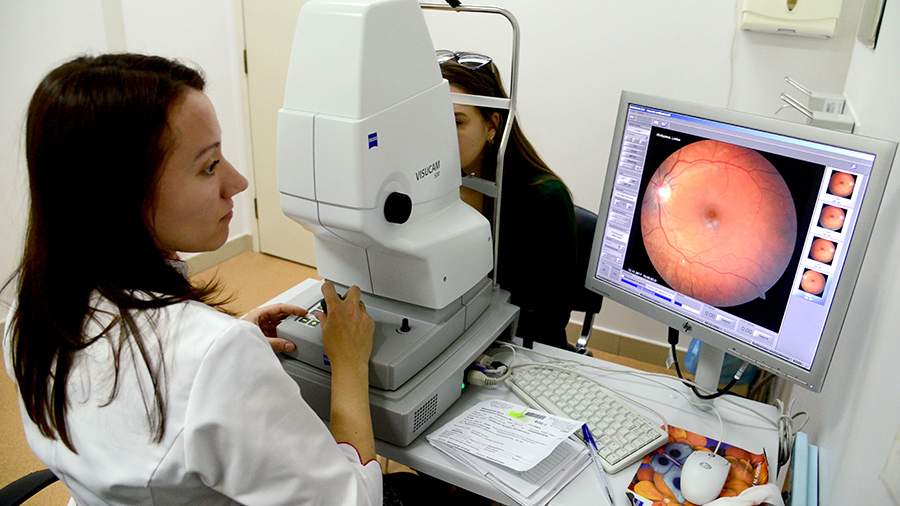An ophthalmologist spoke about the causes of color vision impairment

A person who distinguishes colors incorrectly is usually called color blind. Currently, ophthalmology does not have such a diagnosis - each color perception disorder has a specific name, said Maria Churganova, an ophthalmologist at SberZdorovye medical company. She told Izvestia on January 31 what forms of color vision disorders exist, why they occur and whether they can be corrected.
As the expert explained, the main colors that the human eye is able to distinguish are red, green and blue. Complete inability to perceive these colors, in which a person sees everything in shades of gray, is called achromatopsia. It is a rare pathology, often combined with other ocular manifestations, such as strabismus, retinal anomalies and nystagmus - a pathological condition in which there is involuntary movement of the eyeballs.
The doctor clarified that the complete absence of green, red or blue color perception is called deuteranopia, protanopia and tritanopia, respectively, while their partial or poor vision is called deuteranomaly, protanomaly and tritanomaly. The most common impairments are the perception of green and red colors.
Churganova said that color vision impairment can be either congenital or acquired. Congenital anomaly is more often transmitted from mother to child and manifests itself predominantly in boys - according to studies, this type of color vision deficit is observed in about 8% of men and 0.5% of women.
According to her, acquired forms of color vision disorders occur in 5-15% of people. The causes may be, for example, cataract - partial or complete clouding of the lens of the eye; hereditary dystrophies - changes in the cells of the retina, which are responsible for color perception; photodamage of the retina; retinal changes associated with diabetes, as well as inflammation of the optic nerve. In addition, acquired color perception impairment can occur with damage to the occipitotemporal cortex; transient hypoxia - a lack of oxygen to the brain, such as from being at high altitude or deep sea diving; and taking certain medications, such as phosphodiesterase inhibitors, digoxin or ethambutol.
The expert specified that in most cases the pathology of color perception is detected accidentally, for example, at a preventive school examination or when passing the commission for obtaining a driver's license.
"If the disorder is highly pronounced, it can be noticed by relatives or close friends even in childhood. To understand whether you have a color vision disorder, you can undergo self-diagnosis - there are online tests for this purpose, as well as various mobile applications, and if there are difficulties in passing them, you should contact an ophthalmologist, because color vision disorders can be unsafe both for the patient and for others, especially in certain areas of activity, for example, in the work of drivers, firefighters or marine specialists," the doctor added.
The diagnosis is established based on a comprehensive eye examination and specific tests for color perception.
Churganova explained that to partially improve color perception in weak forms of congenital disorders, the doctor can prescribe special glasses or contact lenses. They correct color perception thanks to a special light filter, but do not eliminate the disease itself, and are also ineffective in the case of complete loss of the ability to distinguish colors.
"Great hopes for a cure for congenital disorder of color perception are pinned on gene therapy - currently undergoing clinical trials. It is assumed that its implementation in childhood achromatopsia will allow patients to see fully all colors, not just a black and white picture," the expert added.
Treatment of acquired forms depends on the cause that caused it, she specified. So, for example, if the disorder is associated with the intake of drugs, the refusal of them can lead to the restoration of normal color perception. However, in some diseases, such as retinal degeneration or inflammation of the optic nerve, full restoration of the function of color perception may not be possible.
Earlier, on November 25, 2024, Inna Varivoda, an ophthalmologist at INVITRO North-West, told Izvestia that omega-3 fatty acids, lutein, zinc and vitamins A, C and E can help prevent problems such as yellow spot degeneration, cataracts, impaired twilight vision and light perception. She also noted that long periods of gadget screen viewing can lead to eye strain, distance focusing problem, dry eye syndrome, and head, back and shoulder girdle pain.
Переведено сервисом «Яндекс Переводчик»
